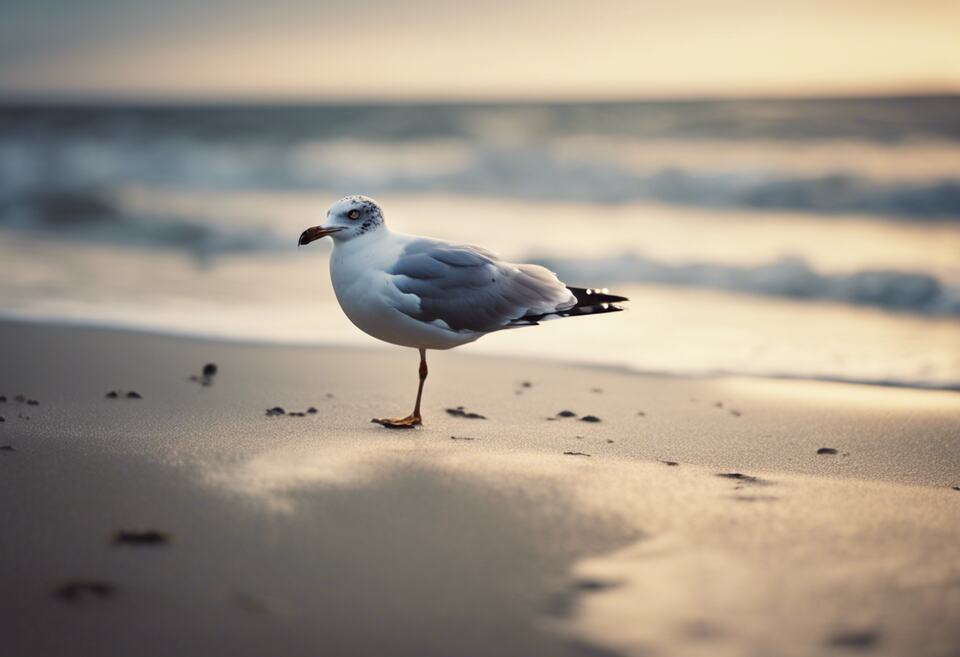Seagulls are fascinating creatures commonly found along coastlines and bodies of water. One of the distinct features of seagulls is their webbed feet, which serve a crucial purpose in their daily lives. Let’s delve into the question: do seagulls really have webbed feet?
Table of Contents
Do Seagulls Really Have Webbed Feet?
The Anatomy of Seagulls’ Feet
Seagulls, like many other seabirds, have webbed feet that are specifically adapted for their marine habitat. These webbed feet are characterized by skin folds that extend between each toe, forming a web-like structure. This unique feature aids seagulls in swimming and maneuvering through water with ease. The webbed feet act as paddles, allowing seagulls to propel themselves effectively in search of food such as fish and marine invertebrates.
Adaptation to Marine Environment
The presence of webbed feet in seagulls is a remarkable evolutionary adaptation to their marine environment. These feet not only aid in swimming and hunting but also enable seagulls to walk on sandy beaches and rocky shores without sinking into the sand or losing balance. The webbed structure prevents them from getting stuck in soft ground and helps them navigate various terrains along the coast.
Comparison to Other Birds
While seagulls are well-known for their webbed feet, not all birds possess this feature. Birds that are primarily terrestrial or tree-dwelling, such as sparrows or hawks, have feet adapted for perching and gripping branches. In contrast, seabirds like seagulls, pelicans, and ducks have webbed feet designed for swimming and diving. This distinction showcases how bird species have evolved unique foot adaptations based on their habitats and behaviors.
Seagulls indeed have webbed feet that play a vital role in their survival and daily activities. These specialized feet enable seagulls to thrive in their marine environment by providing them with agility, stability, and efficiency in swimming and hunting. The webbed structure sets seagulls apart from other bird species and showcases their remarkable adaptation to coastal living. Next time you spot a seagull gracefully gliding over the water, take a moment to appreciate the beauty and functionality of their webbed feet.
The Functionality of Seagulls’ Webbed Feet in Their Natural Habitat
Seagulls are fascinating creatures commonly found along coastlines around the world. One of the distinctive features of seagulls is their webbed feet, which play a crucial role in their survival and daily activities. These specialized feet are a remarkable adaptation that allows seagulls to thrive in their natural habitat.
The Anatomy of Seagulls’ Webbed Feet
Seagulls have webbed feet that are perfectly designed for their marine lifestyle. The webbing between their toes serves a specific purpose, enabling seagulls to be efficient swimmers and adept hunters. This anatomical feature is essential for their survival as it provides stability and agility both in the air and in the water.
Functionality in Swimming
The webbed feet of seagulls act like paddles, allowing them to glide gracefully across the water surface. This webbing increases surface area, enabling seagulls to push against the water with greater force, thus propelling them forward efficiently. This adaptation is particularly useful when seagulls dive into the water to catch fish or other marine prey.
Enhanced Stability
Apart from aiding in swimming, seagulls’ webbed feet also contribute to their stability while perched on rocky cliffs or floating on the water. The interconnected webbing acts as a stabilizer, providing seagulls with a solid base to maintain their balance in various environments. This stability is vital for seagulls, especially during rough weather conditions or while resting on precarious surfaces.
Efficient Hunting Abilities
Seagulls are opportunistic feeders and skilled hunters. Their webbed feet play a crucial role in hunting for food along the shorelines. Seagulls can wade in shallow waters and use their webbed feet to disturb the sand or mud to uncover small fish, crabs, and other aquatic organisms hidden beneath the surface. This hunting strategy is facilitated by their specialized feet, giving them a distinct advantage in capturing elusive prey.
Adaptation to the Coastal Environment
Living in coastal regions presents unique challenges and opportunities for seagulls. The presence of water bodies necessitates efficient swimming abilities, which are supported by their webbed feet. Whether foraging for food, evading predators, or navigating the coastal landscape, seagulls rely on their webbed feet to thrive in this dynamic environment.
Seagulls’ webbed feet are not merely a distinctive feature but a remarkable adaptation that enhances their functionality in various aspects of their lives. From swimming and hunting to stability and survival, the webbed feet of seagulls showcase the evolutionary brilliance of these coastal birds. Next time you observe a seagull gracefully gliding over the water, take a moment to appreciate the role their webbed feet play in making it all possible.
Conclusion
Seagulls, with their captivating presence along coastlines and bodies of water, have long been intriguing creatures for many. Their webbed feet, a distinctive feature that sets them apart from other birds, play a crucial role in their survival and daily activities. As we’ve explored, seagulls indeed have webbed feet, which are perfectly adapted to their marine environment. These webbed structures enable seagulls to navigate various terrains, float effortlessly on water surfaces, and even dive underwater in search of food. The functionality of seagulls’ webbed feet is a marvel of evolution, showcasing nature’s incredible adaptability and precision in creating species perfectly suited to their habitats.
In their natural habitat, such as coastal areas, beaches, and cliffs, seagulls rely heavily on their webbed feet to thrive. Whether perched on rocky ledges, flying gracefully above the waves, or wading through shallow waters, seagulls’ webbed feet provide them with stability, agility, and efficiency in their movements. These feet act as versatile tools, aiding seagulls in catching fish, mollusks, and other small marine creatures, which form a significant part of their diet. The webbing between their toes not only serves as a means of propulsion in water but also assists in steering and maneuvering during flight, making seagulls skilled and agile aviators.
In addition to their foraging and hunting skills, seagulls’ webbed feet also play a role in their social interactions and breeding behaviors. During the breeding season, male seagulls may use their webbed feet to create shallow depressions in the sand or soil as part of courtship displays. This behavior not only showcases the male’s fitness and ability to provide but also demonstrates the importance of their webbed feet in shaping their mating rituals. Furthermore, seagulls often congregate in large groups, known as colonies, where their webbed feet aid in maintaining balance and stability on crowded nesting sites, rocky cliffs, or exposed shorelines.
As we marvel at the wonders of nature and the intricacies of seagulls’ webbed feet, it becomes evident that these seemingly simple appendages are a testament to the adaptability and resilience of these coastal birds. From their origins as seabirds to their widespread presence in urban, coastal, and marine environments, seagulls have carved out a niche for themselves, utilizing every aspect of their anatomy, including their webbed feet, to thrive in diverse ecosystems. Whether gliding effortlessly through the sky, diving into the depths of the ocean, or simply standing sentinel on a windswept shore, seagulls embody the beauty and complexity of the natural world.
The next time you see a seagull soaring overhead or perched gracefully on a pier, take a moment to appreciate the remarkable adaptations that make these birds such fascinating creatures. Their webbed feet, a defining feature that enables them to navigate land and sea with equal ease, encapsulate the essence of seagulls’ unique charm and resilience in the ever-changing tapestry of the coastal ecosystem.



